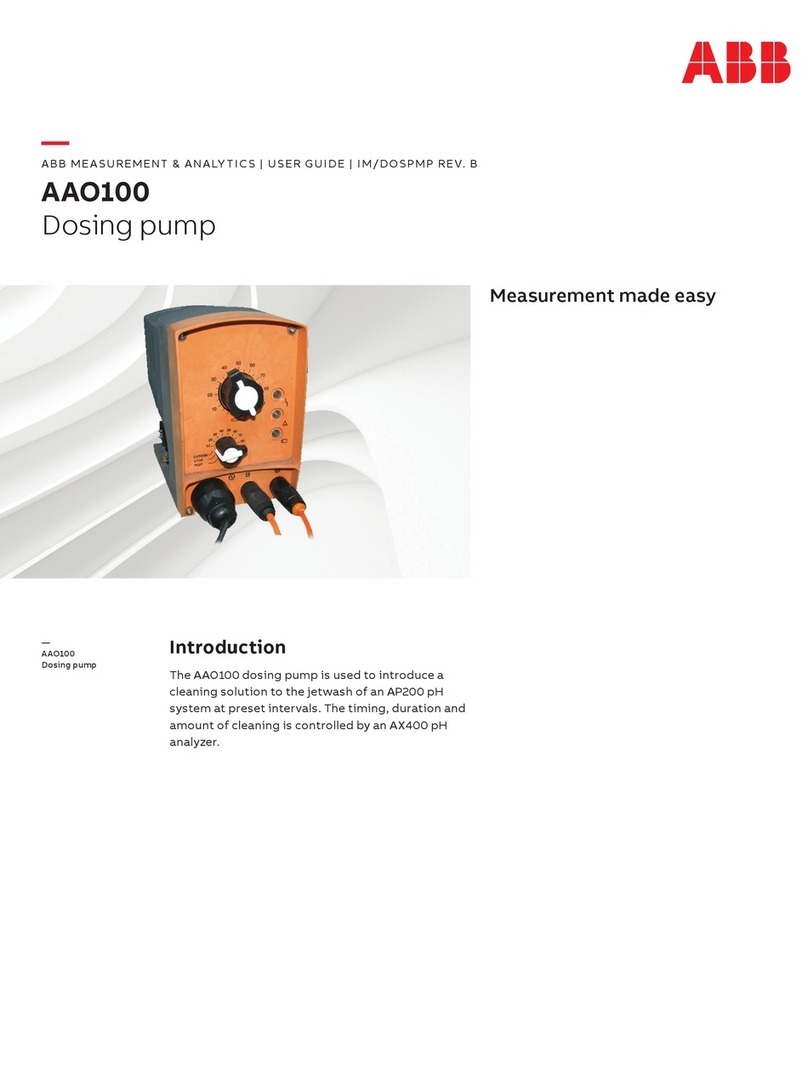
2 Safety
2 INF09/027 Rev. D | Endura AZ20 oxygen monitor | Pumped reference air unit
2.3 Electrical Safety – CEI / IEC 61010-1:2001-2
This equipment complies with the requirements of CEI / IEC
61010-1:2001-2 'Safety Requirements for Electrical Equipment for
Measurement, Control and Laboratory Use' and complies with US
NEC 500, NIST and OSHA.
If the equipment is used in a manner NOT specified by the
Company, the protection provided by the equipment may be
impaired.
2.4 Symbols – CEI / IEC 61010-1:2001-2
One or more of the following symbols may appear on the equipment
labelling:
2.5 Restriction of Hazardous Substances (RoHS)
2.6 Product disposal
Protective earth (ground) terminal.
Functional earth (ground) terminal.
Direct current supply only.
Alternating current supply only.
Both direct and alternating current supply.
The equipment is protected through double insulation.
This symbol, when noted on a product, indicates a potential
hazard which could cause serious personal injury and / or
death.
The user should reference this instruction manual for
operation and / or safety information.
This symbol, when noted on a product enclosure or barrier,
indicates that a risk of electrical shock and / or electrocution
exists and indicates that only individuals qualified to work
with hazardous voltages should open the enclosure or
remove the barrier.
This symbol indicates that the marked item can be hot and
should not be touched without care.
This symbol indicates the presence of devices sensitive to
electrostatic discharge and indicates that care must be taken
to prevent damage to them.
The European Union RoHS Directive and subsequent
regulations introduced in member states and other
countries limits the use of six hazardous substances
used in the manufacturing of electrical and electronic
equipment. Currently, monitoring and control
instruments do not fall within the scope of the RoHS
Directive, however ABB has taken the decision to
adopt the recommendations in the Directive as the
target for all future product design and component
purchasing. .
Note. The following only applies to European customers.
ABB is committed to ensuring that the risk of any
environmental damage or pollution caused by any of
its products is minimized as far as possible. The
European Waste Electrical and Electronic Equipment
(WEEE) Directive (2002 / 96 / EC) that came into force
on August 13 2005 aims to reduce the waste arising
from electrical and electronic equipment; and improve
the environmental performance of all those involved in
the life cycle of electrical and electronic equipment.
In conformity with European local and national
regulations (EU Directive 2002 / 96 / EC stated
above), electrical equipment marked with the above
symbol may not be disposed of in European public
disposal systems after 12 August 2005.




























